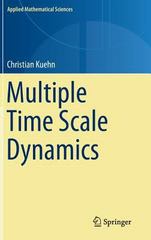Question
In a study of pulse rates of men, a simple random sample of 140 men results in a standard deviation of 11.3 beats per minute.
In a study of pulse rates of men, a simple random sample of 140 men results in a standard deviation of 11.3 beats per minute. The normal range of pulse rates of adults is typically given as
60 to 100 beats per minute. If the range rule of thumb is applied to that normal range, the result is a standard deviation of 10 beats per minute. Use the sample results with a 0.10
significance level to test the claim that pulse rates of men have a standard deviation equal to 10
beats per minute; see the accompanying StatCrunch display for this test. What do the results indicate about the effectiveness of using the range rule of thumb with the "normal range" from 60
to 100 beats per minute for estimating in this case? Assume that the simple random sample is selected from a normally distributed population.
Question content area bottom
Part 1
Let denote population standard deviation of the pulse rates of men (in beats per minute). Identify the null and alternative hypotheses.
H0:
not equals
equals=
greater than>
less than<
H1:
greater than>
less than<
equals=
not equals
Part 2
Identify the test statistic.
Part 3
Identify the P-value.
Part 4
State the conclusion about the null hypothesis, as well as the final conclusion that addresses the original claim.
Reject
Accept
Fail to reject
the null hypothesis. There
is not
is
sufficient evidence to
support
warrant rejection of
the claim that pulse rates of men have a standard deviation equal to 10 beats per minute. The results indicate that there
is not
is
significant evidence that using the range rule of thumb with the "normal range" from 60 to 100 beats per minute for estimating
is not
is
effective in this case.
Step by Step Solution
There are 3 Steps involved in it
Step: 1

Get Instant Access to Expert-Tailored Solutions
See step-by-step solutions with expert insights and AI powered tools for academic success
Step: 2

Step: 3

Ace Your Homework with AI
Get the answers you need in no time with our AI-driven, step-by-step assistance
Get Started


